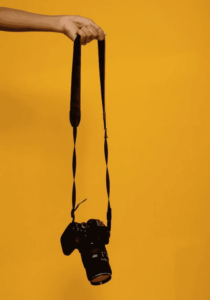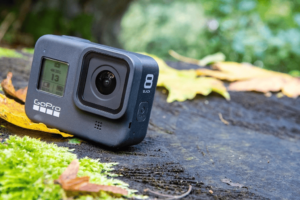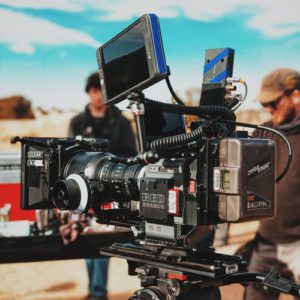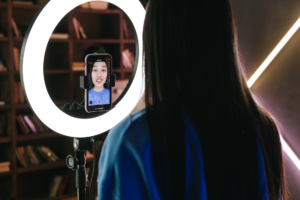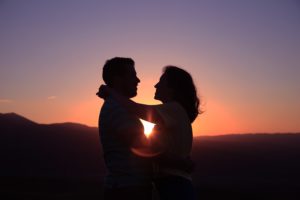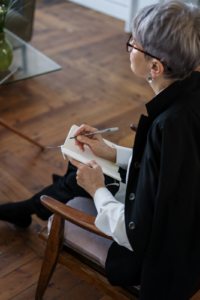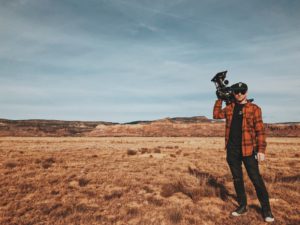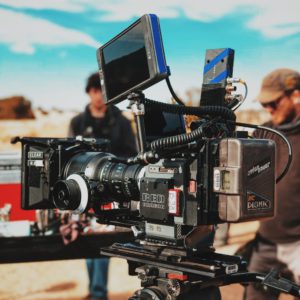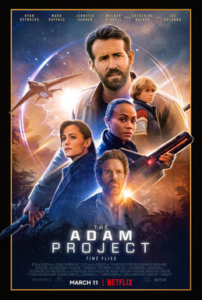Making documentaries is one of the most rewarding and challenging endeavors you can undertake. A documentary is a video or film that examines a real-life theme, person, event, or problem. They are often instructive in nature, very specific, and have an appealing tone to them. Finally, a story is usually recorded with sincerity that, in theory, moves anyone who sees it.

Step-by-step instructions to make a documentary
Beginning
Documentary filmmaking is a difficult challenge, so you’ll need a fire-breathing spirit to get you through. You should find a topic that you are passionate about and tell its tale in order to communicate your point of view. Look for a beneficial topic and think about how to build a story that your audience can enjoy.
Research
Learn everything you can about the topic of your documentary. In some cases, the plots are self-evident; in others, they are not. Burrow extensively and follow leads. This is where you’ll put your correspondent cap on. Set out to follow the leads that will bring your documentary to a close. Keep the following points in mind:
- Take notes during your exploration
- Guarantee exactness
- Direct introductory meetings
- Look at comparative documentaries.
- Go for a fascinating, enthusiastic, and additionally motivating point.
- Incorporate central issues that will resound with your crowd
Check this article out to know more about documentary research.
Make a Chart
Make a diagram. Think about how you’ll tell your story. What is the status of the construction? What about the design? Is there any current film or photography that can help tell your story, or will it have to be shot from scratch? Who are the main characters in your story? What is the central tale in your novel?
What are the elements of your story that are both compelling and make you “shiver” with anticipation? How would you pique your audience’s interest? Is there a current event you might film, or will you have to create one?
Make a Shot List
Include filmmaking; you’ll need to create a storyboard or material that you can follow once you start filming. A general diagram for the most recent yield will suffice. The plot of the story should be determined, a shot list should be laid out, areas and respondents should be noted, and an underlying list of inquiry questions should be included in this diagram.
It should also include a suggested schedule for the opening bulletin (OBB) or presentation, as well as the closing bulletin (CBB) or outro. Similarly, decide which of your current documents and resources you want to document and add carefully during the altering process.
At this point in the filmmaking process, there’s no valid justification to create content for your account. If you plan to incorporate voice-overs to make viewing more comfortable for your viewers, it’s important that you wait until the outcome has been confirmed before recording your narration so that you don’t limit the recording of your story to a predetermined story.
Plan The Production and Story Structure
This is where you can be more specific about how you’re going to film your documentary. Think about how you’ll begin your story now that you’ve gathered all the necessary information. Determine the central plot focuses, persuasion elements in your story, important characters, narrating structure, and overall storyline.
Depending on the progression of your story, you may need to shoot an entirely original film and create minutes, or you may need to use existing film and other resources to help you tell your story. Consider these factors from the start to assist you in preparing everything you’ll need for the shoot’s execution.
Make a Budget
This step may seem unnecessary for a one-man team documentary, yet making a general spending plan allows the documentary producer to decide exactly how far they can go to improve their yield without going over the edge.
If you choose a subject that is well-known among others, it will not pique the interest of your audience as much. Simplify the topic if it is a costly one to stop going over your budget.
An instance of this is the acclaimed 2017 documentary Abacus: Small Enough to Jail took on the 2008 monetary breakdown and had to limit its story to the lone bank.
Also, keep in mind your assets. Make sure your budget includes the beginning of your plot. If you’re filming an unnatural weather shift story that necessitates a location shoot in Antarctica, make sure your budget allows for it.
For both small and longer narratives, significant variables for spending arranging ordinarily incorporate the following:
- Hardware and studio costs
- Responsibility protection
- Creation group
- Copyright expenses
- Area grants
- Props
- Cooking
- After creation altering
- Promoting costs
- Dissemination costs
This can likewise be the ideal opportunity to search for sponsorships and plan to raise money exercises on the off chance that you wish to expand your financial plan. Read this to know more about budget planning.
Select Essential Camera Equipment for Making Documentary
You’ll need to gather your camera equipment before you can start working on your documentary. The main gear in your unit can be as complicated as you want it to be, but it should include the following items:
- DSLRs, mirrorless cameras, camcorders, action cameras, and even mobile phones can be used to capture video. Choose a camera that allows you to adjust focal points and settings for the best adaptability.
- Microphone (or microphones): In any case, you’ll need a shotgun mic, though lavalier mics are also used by many documentary filmmakers.
- Stand with a gimbal or camera head: Your shots would be cleaner and more professional if you use a mount or another camera backing.
Read this to know more about essential equipment for documentary making.
Secure Legal and Copyright Permits
Remember to follow the legitimate documentary filming guidelines before you start recording and using existing footage. This includes securing the rights to use film, music, and other resources that are protected by strict intellectual property laws. However, as much as is reasonable, use your music to minimize your energy investment, exertion, and financial outlay. Here’s how you can get legal and copyright permissions.
Shooting Schedule
With so many moving parts in documentary filmmaking, you’ll need to make plans to deal with any unexpected problems that might delay your project and impact your budget. When booking the shoot, keep the following in mind:
- The action plan for on-the-spot shoots
- For the creation community, there are call times and tasks.
- Meetings with respondents are scheduled.
- Obtaining permission to film current documents and studies
- Returning to the drawing board with new ideas
- Filmmaking and rearranging schedules
Start Shooting!!
Consider how you want your documentary to be viewed before deciding on the filming hardware to use. If you want a documentary that is vivid and details every aspect of the visuals, you’ll need to use a higher resolution camera.
Building up shots, for example, are necessary to put your scenes in the setting and avoid mistaking the audience for reverence for the story’s events. To be sure, you’ll need to figure out what recording techniques to use in order to make your perfect video.
Remember to guide meetings with key respondents during filming to provide sound support for your post. Take note of everything you need to emphasize, including existing resources (such as significant pieces of proof) and real-life footage (of people going about their daily lives) to support your story.
If you’re showcasing a recorded trend, you may want to consider shooting re-manifestations to give your audience a sense of how important figures felt at the time of the original event and how much has changed since then.
Make Changes to Your Video
It’s a good idea to start altering your video once you’ve gathered all the necessary music, video, and other computerized material for your documentary.
You may begin arranging your clasps in an arrangement using your PC and video editing software. The most obvious improvement is to sequence your captured recordings according to your suggested narrative timeline. If you’re modifying yourself, do it the way the pros do it: mix it up with fast and moderate sections to create a lively and diverse survey perspective.
Clasp and trim your recordings depending on the situation until you’ve spread out the entirety of your recording. Remove any unnecessary film that will drain your audience and will never contribute to your unique thought. Clean up the previous video by making sure your scene plans are in order and adding effects to keep things moving along smoothly.
Share Your Documentary
Following the monotonous long stretches of training, shooting, and alterations, it’s finally time to show off the incredible result of your tireless effort and inventiveness. The next major decision you’ll have to make is where you’ll show your work. If your previous yield was truly exceptional, you’d have more options, but it could also be dependent on your budget.
You can start by conducting a free assessment for your closest friends and family members. Collect their feedback and create online surveys for your story with this network. You’d then be able to start advertising your film for free on YouTube and other online media outlets, as well as through traditional print ads and other informal platforms.
It can also help you create a teaser that will pique people’s interest in your film without giving too much away.
You may enlist the support of an expert wholesaler to help bring your film to a much larger audience if you genuinely believe it deserves to be promoted further, particularly in light of positive initial responses and surveys. For possible tie-ins and references, you can also consult local TV stations and other film distribution outlets.
Types of Documentaries
Documentaries are divided into a variety of groups and categories. This allows filmmakers to push traditional boundaries or combine elements from different modes to create a unique and amazing film.
Bill Nichols, an American film critic, and theoretician, proposed in 1991 that there are six distinct types of narrative: literary, informative, reflexive, observational, performative, and participatory, each with its own set of characteristics. While some documentary films have a cover in qualities, every mode is a class that can be broken down into a few explicit elements.
- Poetic mode
Straight progression is avoided in a perfect documentary in favor of the state of mind, sound, or juxtaposition of symbolism. Since elegant documentaries often lack narrative material, the director of photography is often enlisted to capture masterfully crafted, visually arresting images that can tell a story without the use of additional words.
Olympia (1938) by Leni Riefenstahl is an example of a beautiful story that relies on visuals and artistic style to reveal an inner reality.

- Interpretive mode
Expository documentaries also include “voice of God” style voice-over to establish a specific viewpoint or contention on a topic. For interpretive narratives, the cinematographer is responsible for collecting film that supports and strengthens the film’s verbally articulated argument, such as stock footage, recorded footage, b-roll, or re-enactments of verifiable events.
The Dust Bowl (2012) is movie producer Ken Burns’ recorded record of the tragic dry season that happened during the Great Depression.

- Participatory mode
The relationship between the narrative producers and their subjects is a distinguishing feature of participatory documentaries. As a result, a cinematographer is just as responsible for capturing the interviewer as he is for catching the interviewee.
Participatory narratives, also known as intuitive narratives, often portray the filmmaker’s version of reality as reality, focusing on direct engagement with subjects and capturing genuine passionate reactions and associations.
A significant number of the intercepted communications support the movie producer’s point of view or illustrate the film’s goal. Many of Michael Moore’s narratives, such as Bowling for Columbine (2001), are participatory, but there are a few that aren’t.

- Observational mode
Observational narratives, a documentary-style adopted by the film verité production, attempt to discover a definitive truth of their topic by acting as a fly-on-the-wall—all in all, noticing the subject’s genuineness without intervening.
In observational narratives, cinematographers are often asked to be as unpretentious as possible in order to capture their subjects in a raw, unguarded state. An illustration of this immediate film sort of narrative is Primary (1960), a film chronicling the Wisconsin essential between John F. Kennedy and Hubert H. Humphrey.

- Reflexive mode
The relationship between the movie maker and the audience is the focus of reflexive documentaries. A cinematographer will shoot a background style film of the entire film production measure, including changing, meeting, and after creation, since the subject is often the interaction of narrative filmmaking itself.
Dziga Vertov’s reflexive narrative Man With a Movie Camera (1929) impacted the world forever with its entertainer-less show of metropolitan Soviet life.

- Performative mode
Performative documentaries focus on the role of the filmmaker in their topic, using their knowledge or relationship with the subject as a springboard for delving into larger, emotional truths about legislative problems, culture, or groups of people.
A cinematographer is often contacted to capture the narrative development process, much like a cozy film that depicts the direct and often close-to-home relationship between movie producers and subjects.
Supersize Me (2004) by producer Morgan Spurlock reports his experience eating just McDonald’s inexpensive food for 30 days, chronicling the body issues, medical conditions, and the following specialist’s visits trying to scrutinize the food sold at the renowned cheap food chain.

What are the Five Elements of a Documentary?
The majority of successful documentaries emphasize five main elements. Every component addresses a key narrating device, ensuring that your audience understands and empathizes with your subject. Your documentary can sound rich and unique while providing a lot of information if you use a joined approach. The following are the five elements:
- Interview: Direct meetings with specialists give significant data and setting to the topic.
- Cutaways: This recording will fill in as fixed-film, or B-move, for assisting with making disposition and give more knowledge about areas and subjects.
- Chronicled Footage: Connect subjects in the past to the present with documented pictures and film.
- Film Verite: Live activity film identifying with your topic will give extra setting, allowing the crowd to watch the ideas of the narrative work out progressively.
- Interaction Footage: Behind the substance of the scene will frequently bring about intriguing, instructive encounters as the crowd learn alongside the movie producers.
What Amount Does It Cost To Make a Documentary?
The costs of producing a documentary have decreased dramatically as DSLR and mirrorless camera technology improve. Producers used to have to rent expensive equipment to film their projects, but now the equipment is much more affordable, and many producers own their own equipment.
Aside from the cost of equipment, you’ll need to apply for the required permits and find collaborators to help you film your documentary. Enlisting people to fill the roles you don’t know anything about is a good idea almost all the time. You will keep yours after creation costs low if you wish to do your own altering.
Depending upon how much assistance you need and how much hardware you need to buy, you can film a straightforward documentary for a couple of hundred dollars.
Read this to know more about the budget for making documentaries.
Essential supplies for making a documentary?
- Camera
The camcorder is the most important piece of filming equipment you have. You can choose some based on the type of story you want to tell, the location where your film will be seen, and your budget. For rough narratives, an iPhone and an action camera may be used, though professional film cameras and 4K camcorders are better for theaters and broadcasting.
- Stand or Camera Rig
A stand or shoulder mount setup, both of which are responsible for keeping your camera consistent for more honed and smoother recordings, is another essential piece of hardware that you’ll need to ensure professional-looking footage.
For the best results, use a stand with a ball head for smoother motions. If you want a cool and creative container with time slips, you’ll probably need to upgrade your hardware with some movement control gear.
- Lighting Gear
Having plenty of lighting is essential, just as it is in photography. In any case, you’ll need a good on-camera light that can give your subject just enough light. However, if you hold regular meetings, you may want to consider investing in a 3-way lighting kit. A small light reflector can also help you look professional while shooting during the day.
- Convenient Digital Audio Recorder
When filming a documentary, one sound blunder you can avoid is capturing sound with your camera mic. While DLSRs can’t capture high-quality sound, an external microphone and a dependable XLR Audio Recorder can. Connect your mouthpieces to the multi-purpose recorder and later sync your sound with your video during editing.
- PC
After the shooting, you’ll need a computer to store, edit, and submit your last narrative. It may be any kind of PC, as long as its operating system is one that you are familiar with and its internal memory is adequate to support heavy video editing.
Exceptional documentary filmmakers begin with a strong desire to share their subject with the rest of the world. Having a unified vision will allow you to adapt your filmmaking approach to cope with the realities you encounter along the way. As you work on the documentary filming project, keep the underlying creative spark in mind.
